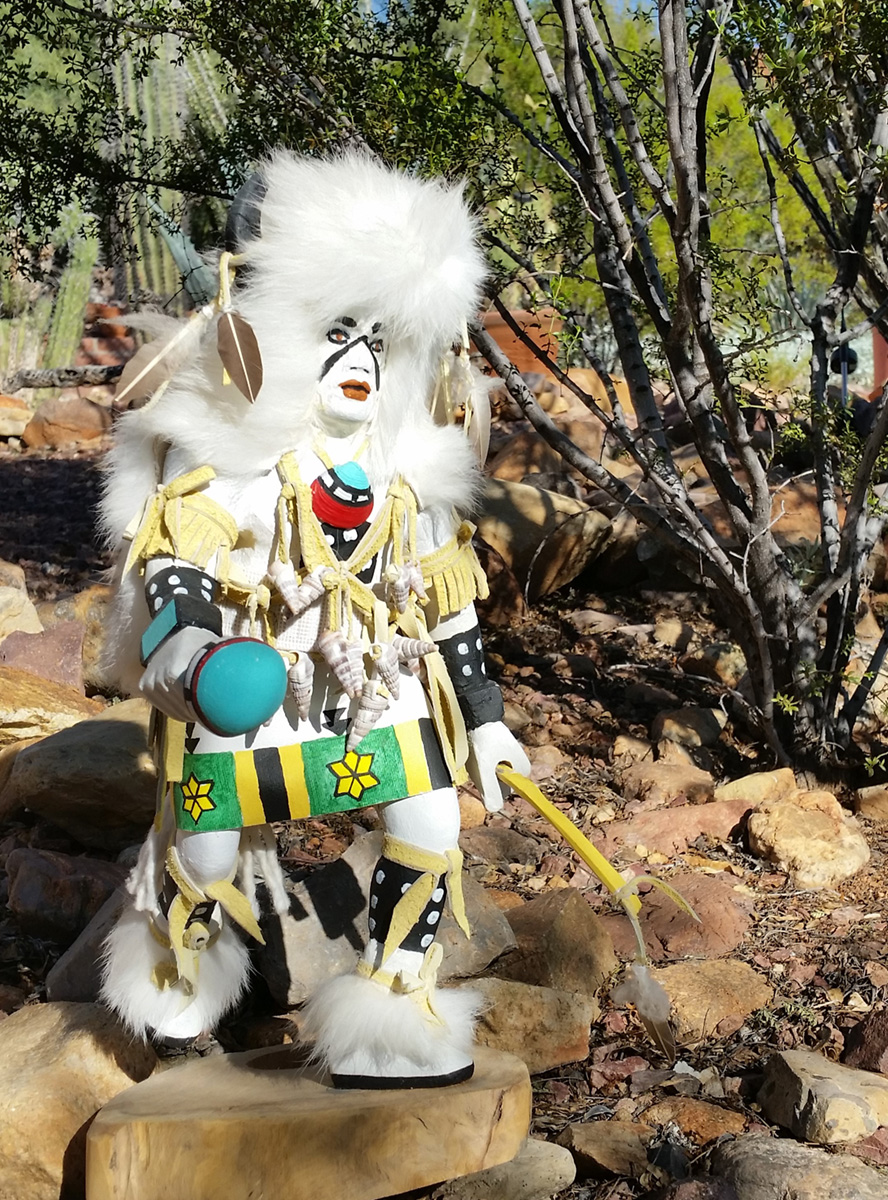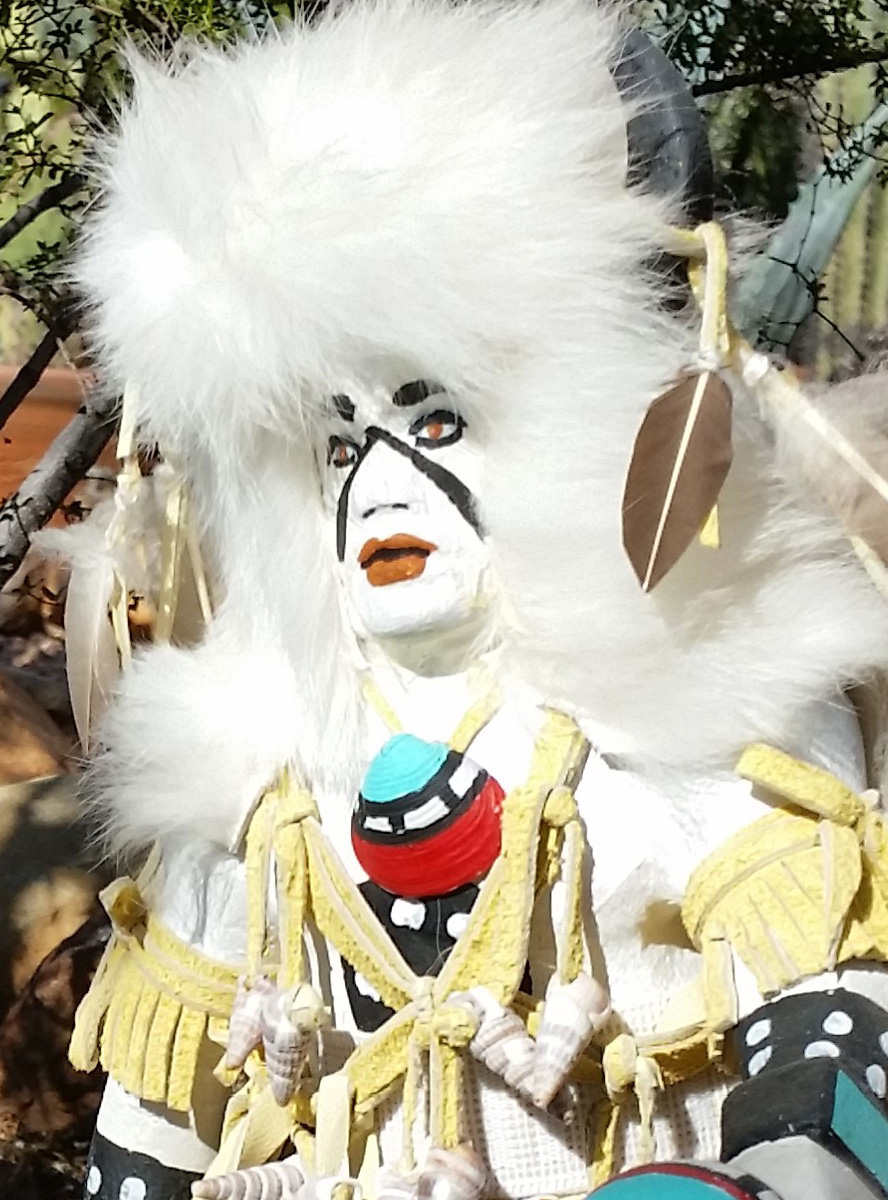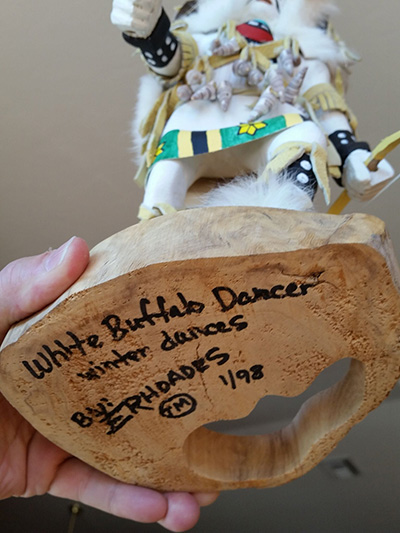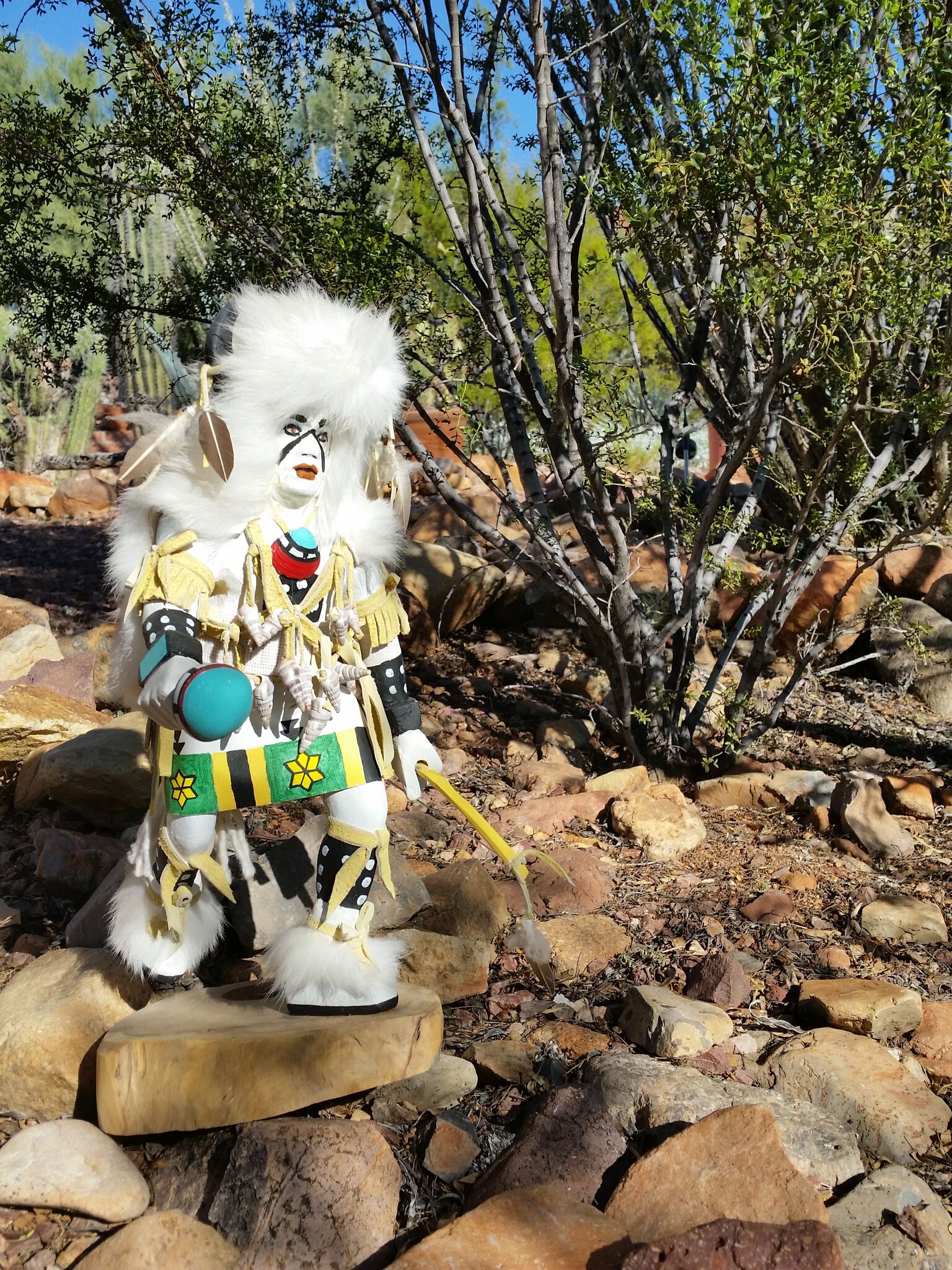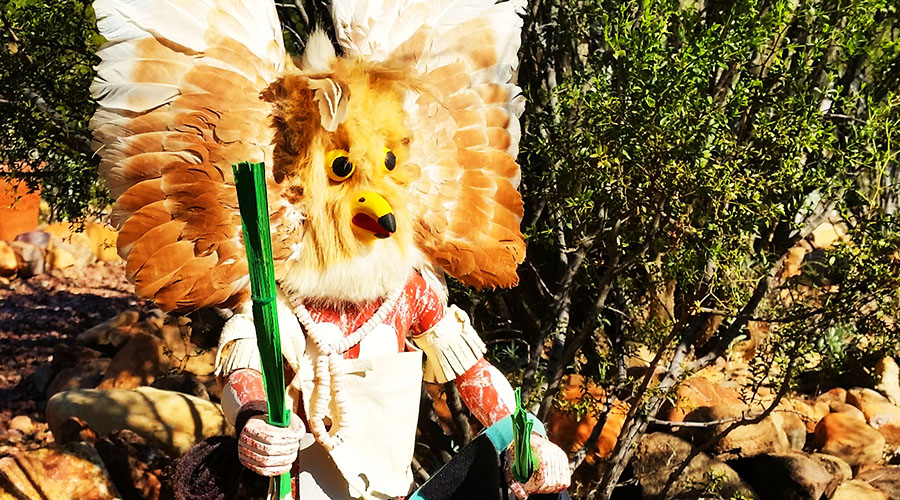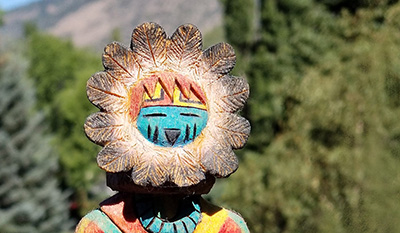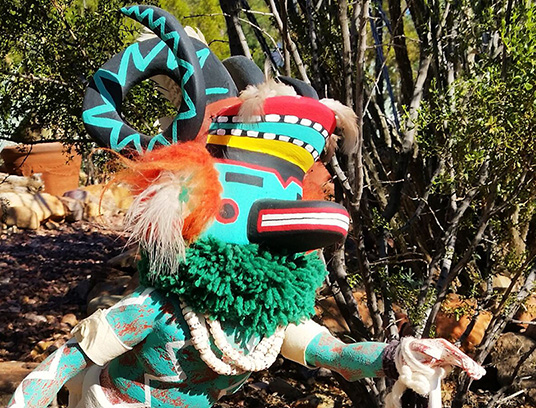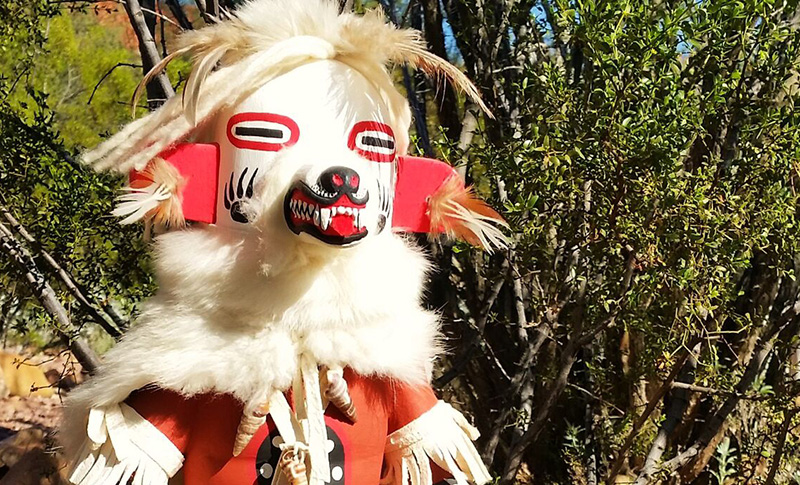White Buffalo Dancer, aka
Kocha Mosairu
The White Buffalo is a symbol of sacred life and abundance, a sign of great strength. The White Buffalo dancer may appear in January, winter dances, at Second Mesa, as a social dancer and represents the most sacred of all the animals. Though not considered a kachina this beautiful White Buffalo Dancer is one of the many dolls in the Field’s Turquoise Spirit Journey private collection.
This White Buffalo Dancer is in excellent condition. The doll stands at some 13”, balanced on one leg, with bow in one hand and rattle in the other hand. The artist nicely captures all the dynamic body movement of the arms, angle of the head and bent legs as though the White Buffalo dancer was caught in mid-stride in dance on the mesa or as if walking towards a very fortunate village. This White Buffalo Dancer doll is hand-carved and hand-painted in all the beautiful symbolic markings and with ornamentation of white rabbit fur, deerskin, clothing, feathers, shells, and a variety of beautiful colors, complete with artisan’s name. There are no cracks or broken parts, simply excellent condition. The artist is E. Rhoades, and purchased January 1998.
White Buffalo, Kocha Mosairu
Before you click to purchase, feel free to send us an email and questions about this beautiful doll. Due to the unique task of shipping we can have that conversation, as well, and then proceed to check out.
Three Aspects of a Kachina
For the Hopi, a Kachina has three aspects; the supernatural being, the masked Hopi dancer and the dolls. Each Kachina has a purpose. The supernatural being is the spirit of the Hopi. The Hopi dancers wear the masks and decorations of the supernatural spirits in the Hopi Plaza. The dolls are the teaching tools made in the likeness of the dancers of the supernatural spirit.
Forces of Nature
Kachinas represent the forces of nature, human, animal, plant, and act as intermediaries between the world of humans and the gods. Kachinas play an important part in the seasonal ceremonies of the Hopi. They represent generations of traditions that have been passed on and are the subject of a number of books.
TIHU
Small kachina dolls, called tihu in Hopi, are given to children to introduce the child to what each of the kachinas look like. The dolls are carved representations of the katsinam, the spirits essences of their ancestors, animals, plants, nature, all that is within the Hopi universe.
Traditionally, kachina dolls are created by Hopi or Zuni artists, and sometimes by the Navajo.
You will see a variety of spellings for Kachina, also known as Katchinas, Katcinas, Katsinas, Kat’sina. Kachina is typically the English spelling, while Katsina is Hopi.
For more information on kachina dolls, as well as other Southwest Native Indian Art, visit Turquoise Spirit Journey.
View other Kachina Dolls in the
Turquoise Spirit Journey Private Collection
MONGWA Great Owl
Great Owl, MONGWA,
symbolizes intelligence and wisdom. The Hopi feel the Mongwa kachina is very beneficial to agriculture keeping their fields free of rodents.
TAWA Sun Kachina
is accredited with the Earth’s creation and thereby highly revered by the Hopi. Tawa and Kokyanwuhti, the Earth Goddess, created the Earth.
PONG Mountain Sheep
PONG, Mountain Sheep
appears in the Hopi Plaza Dance as a group, as a heard of mountain sheep, and typically dances with a cane.
HON White Bear Kachina
White Bear Kachina, HON,
is powerful and thought to be capable to curing illness. Naturally, they are great warriors, with the bear claw symbolic of great strength and power. HON are usually seen in the Soyohim or Mixed Dances in the spring.

